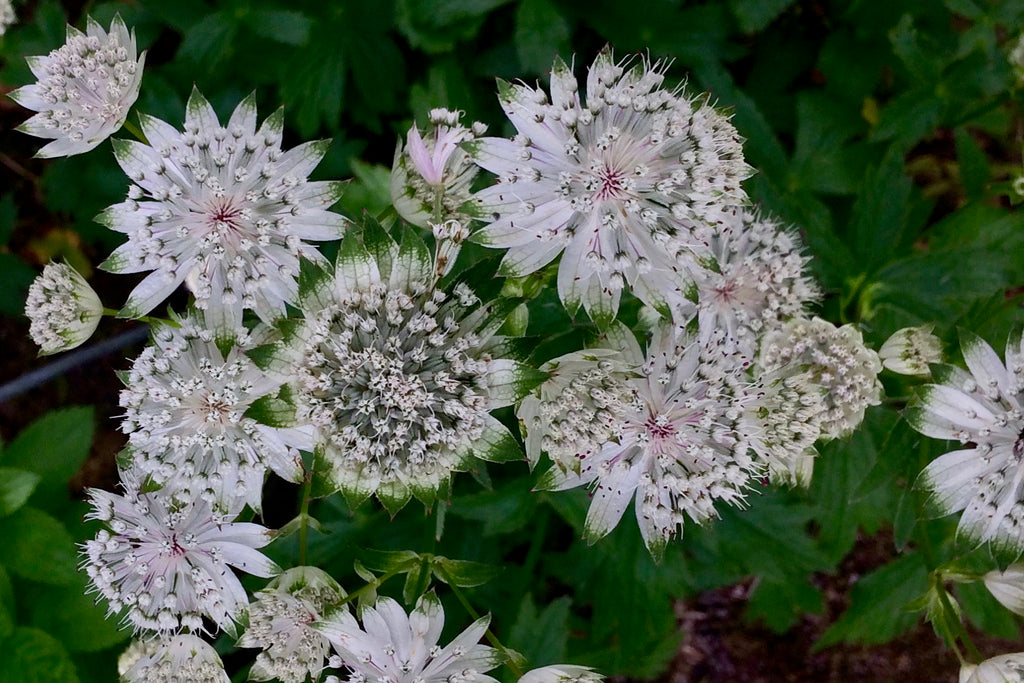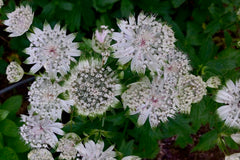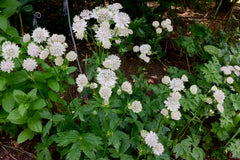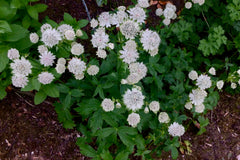



About this cultivar:
Astrantia 'Snow Star' is, with us, a dwarf version of Astrantia - look at the photos. We haven't had it too long but can't fault it really. Foliage is always clean, lots of flowers for a long time. A (snow) star! It is supposed to be taller than 'Alba' but we can't say we've grown that one. A 2002 introduction from Aad Geerlings.
- Position: Full sun, partial shade
- Soil: Almost any soil
- Flowers: June, July, August, September
- Other features: Bees and Butterflies, Cut Flowers or Dried Flowers,
- Hardiness: H7 - Hardy in the severest European continental climates (< -20°C)
- Habit: Clump forming, Bushy
- Foliage: Deciduous
- Height: 30 - 60 cm (1 - 2 ft)
- Spread: 30 - 60 cm (1 - 2 ft)
- Time to full growth: 2 to 5 years
- Plant type: Herbaceous Perennial
- Colour: White, green
- Goes well with: Campanula lactiflora 'Pritchard's Variety', Salvia nemorosa 'Caradonna', Rosa, Geranium 'Sirak' (see photo)
About this genus:
Astrantia is an upright herbaceous perennial that is probably our favorite plant in the garden at Ballyrobert. We find that nearly every Astrantia cultivar grows well in nearly every soil and situation; from shade to sun, from dry to wet, from clay to sand! They look great in sun when buzzing with insects but they can also be used in some troublesome part-shade areas. When the flowers die back they dry out very quickly, go light brown, and stay upright - this gives wonderful structure if you decide not to cut them back. This makes a wonderful cut or dried flower, hence the prevalence in the industry.
Sometimes this Genus is known as Masterwort or Hatties pincushion. The Genus name comes from a Greek word 'astron' meaning star in reference to the flower head shape or from magistrantia (derived from the Latin word 'magister' meaning master or teacher).

